Aquatic Invertebrates
Media
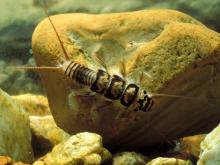
Species Types
Scientific Name
There are hundreds of species in North America
Description
Stonefly larvae are aquatic and somewhat resemble the larvae of mayflies and damselflies. Their presence usually indicates good water quality.
Media
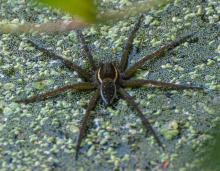
Species Types
Scientific Name
Dolomedes spp., Tetragnatha spp., and others
Description
A variety of spiders are adapted for live on and around water. Many of these are called fishing spiders. Several have the ability to run across the water’s surface. Some build webs, others do not.
Media

Species Types
Scientific Name
Dugesia, Planaria, and other genera
Description
Unlike their parasitic cousins in the flatworm group, turbellarians, or planarians, are tiny carnivores or detritus-eaters that glide smoothly across submerged leaves and other objects.
Media

Species Types
Scientific Name
Faxonius harrisonii (formerly Orconectes harrisonii)
Description
The belted crayfish is medium-small, tan, with a distinctive pattern of alternating olive-green and reddish-brown bands on the abdominal segments. It is found only in the Big River and its tributaries.
Media

Species Types
Scientific Name
Faxonius medius (formerly Orconectes medius)
Description
The saddleback crayfish has a bold blackish band across the hind margin of the carapace and lacks dark blotches or specks. The pincers are broad and powerful. It occurs in the Big and Meramec river drainages.
Media
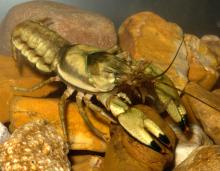
Species Types
Scientific Name
Faxonius neglectus (formerly Orconectes neglectus)
Description
The ringed crayfish is olive green to reddish tan and usually has black or brown rings around the pincer tips. In Missouri it is found in clear, rocky Ozark streams in the southwestern quarter.
Media
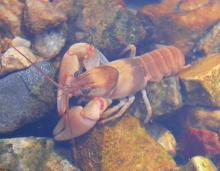
Species Types
Scientific Name
Faxonius luteus (formerly Orconectes luteus)
Description
The golden crayfish varies in color from olive green to golden yellow. Many body parts are trimmed with red. A dark band crosses the head just in front of the cervical groove, and another crosses the carapace at its junction with the abdomen. It's a wide-ranging species.
Media
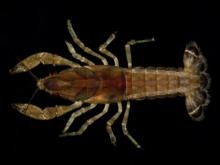
Species Types
Scientific Name
Faxonella clypeata
Description
The shield crayfish is small and tan, with a pattern of paired blackish dashes along the surface of the carapace and abdomen. The pincers are narrow, with short, abruptly tapering fingers. In Missouri it occurs only in our southeast counties.
Media

Species Types
Scientific Name
Toxolasma parvus
Description
These diminutive mollusks are the smallest of Missouri’s freshwater mussels.
Media

Species Types
Scientific Name
Faxonius longidigitus (formerly Orconectes longidigitus)
Description
The longpincered crayfish is large and colorful, with very long, slender, blue-green pincers that are studded with prominent yellowish knobs. It is restricted to the White River basin in the Ozarks.
See Also
About Aquatic Invertebrates in Missouri
Missouri's streams, lakes, and other aquatic habitats hold thousands of kinds of invertebrates — worms, freshwater mussels, snails, crayfish, insects, and other animals without backbones. These creatures are vital links in the aquatic food chain, and their presence and numbers tell us a lot about water quality.





















